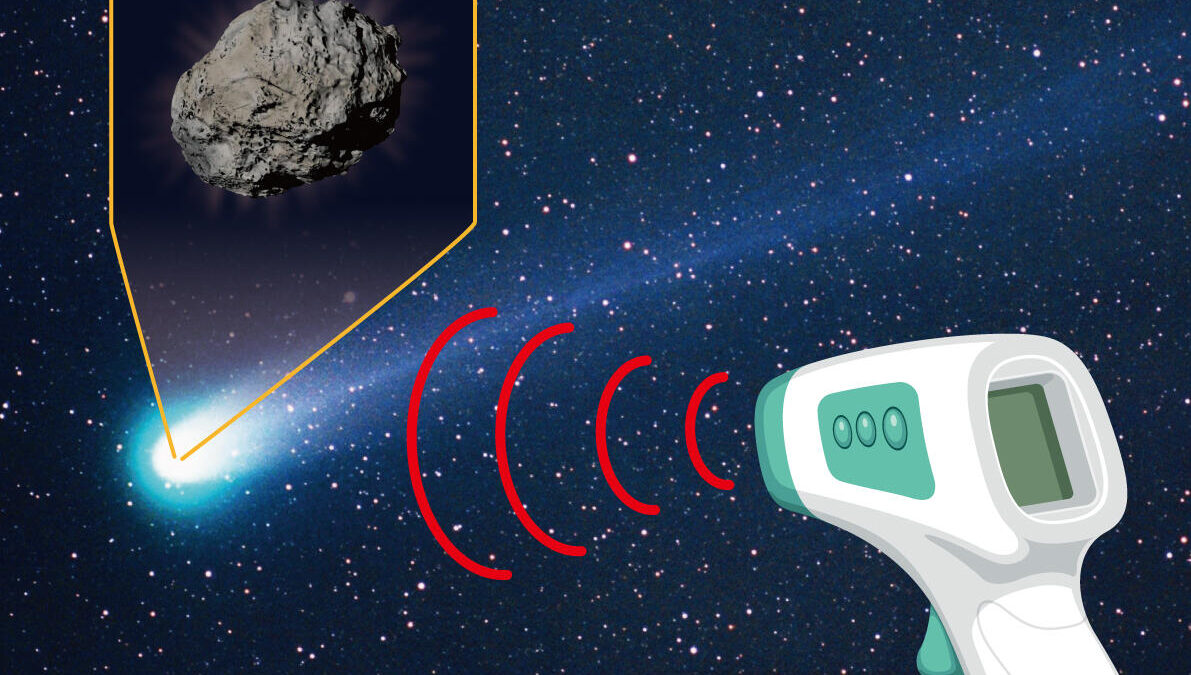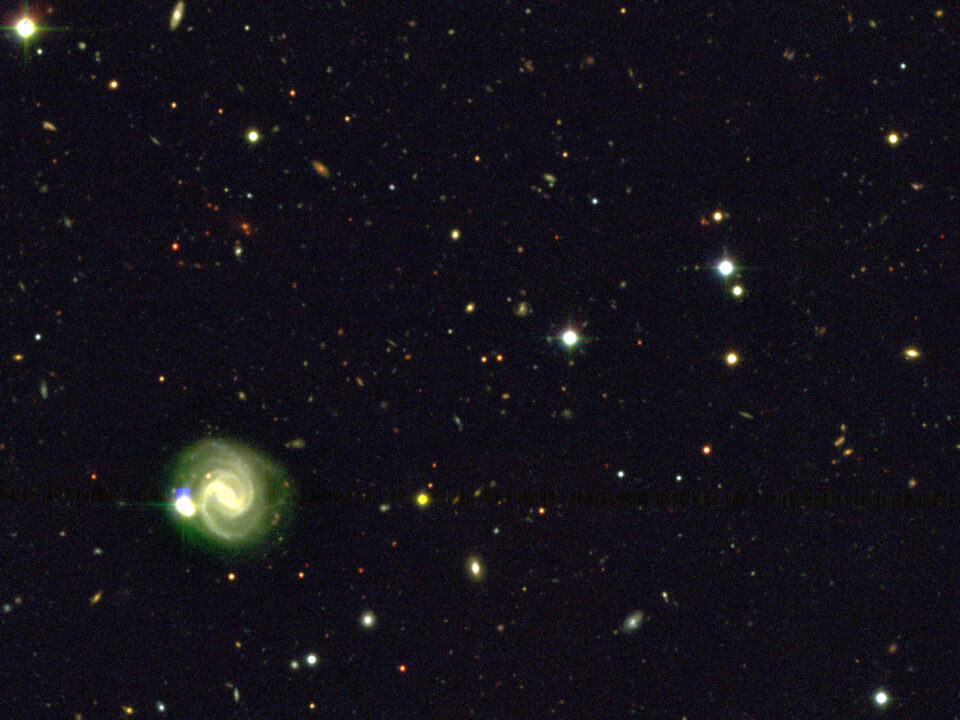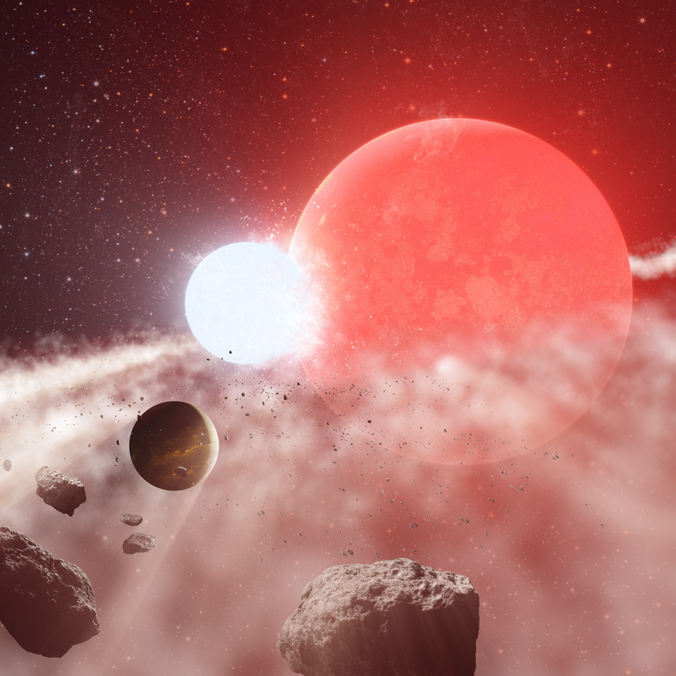Subaru Telescope Observes a Comet Nucleus Covered in “Talcum Powder”

New light on Pōwehi: Magnetic Fields at the Edge of M87’s Black Hole
March 29, 2021
Night and Day, a Live Stream of the Sky from Subaru Telescope
May 5, 2021Conceptual image. By observing a comet in thermal infrared wavelengths, the same wavelengths used by noncontact thermometers, it is possible to determine not only its current temperature, but also the surface composition of the nucleus which contains information about the thermal history of the comet. (Credit: Kyoto Sangyo University)
Astronomers using the Subaru Telescope on Maunakea have measured the characteristics of mid-infrared light from an old comet nucleus. The comet, originally detected by the Pan-STARRS survey telescope on Haleakalā, passed quite close to the Earth and the team managed to observe it just a day before its closest approach. Besides measuring the size of the nucleus (about half a mile across), they showed that the mid-infrared glow was characteristic of tiny sand-like grains, of a particular type which are better known on Earth as talcum powder. Interestingly, they showed that the grains had been heated to more than 330°C or 600°F (about the temperature of a pizza oven) in the past. This can be explained if the comet’s orbit once passed much closer to the Sun than it does now, and provides a hint into how comets age. These observations were uniquely suited to Maunakea as the conditions on the mountain are especially well-matched to infrared astronomy.
Read more, in the Subaru Telescope press release.




